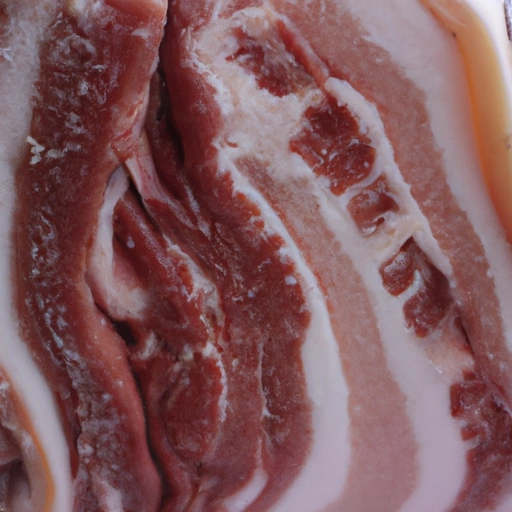Salt Pork
Description

Salt pork is a traditional food ingredient made from pork belly, or occasionally fatback, that has been preserved through salt-curing. It is known for its rich, fatty texture and its ability to add depth and flavor to a variety of dishes. Salt pork resembles uncut bacon in appearance but is much saltier due to the curing process.
Common uses
Salt pork is often used to add flavor to soups, stews, beans, and vegetables. It can also be rendered to produce fat, which is then used as a cooking medium or as a base for sauces and gravies.
Nutritional value
Calories
A 1-ounce serving (about 28g) of salt pork contains approximately 115 calories.
Protein
Each 1-ounce serving of salt pork offers about 7 grams of protein.
Fat
Salt pork is high in fat, with around 10 grams per 1-ounce serving, most of which is saturated.
Carbohydrates
As a pure animal product, salt pork contains no carbohydrates.
Vitamins
It contains trace amounts of vitamins, particularly B-vitamins like niacin and B12.
Minerals
Salt pork is a source of minerals such as selenium and phosphorus but is also very high in sodium.
Health benefits
While salt pork is not typically consumed for its health benefits, it does provide protein and some B-vitamins necessary for maintaining health.
Potential risks
Due to its high sodium and saturated fat content, excessive consumption of salt pork can lead to increased blood pressure and a higher risk of heart disease. It should be consumed in moderation, particularly by individuals with hypertension or cardiovascular concerns.
Common recipes
Salt pork is commonly used in traditional recipes such as Boston baked beans, clam chowder, and greens like collard or mustard greens.
Cooking methods
The ingredient can be diced and rendered, braised, or used to season other dishes while cooking.
Pairing with other ingredients
It pairs well with legumes, potatoes, and hearty greens. In many recipes, it can be replaced with bacon for a similar flavor profile.
Summary
Salt pork is a versatile, flavor-packed ingredient that has deep historical roots and continues to be a beloved part of many culinary traditions. It must be used thoughtfully due to its high sodium content, but when applied sparingly, it can elevate the taste of a wide range of dishes. Whether you're cooking with American cups and tablespoons or European grams and milliliters, salt pork is an international staple that can be adapted to suit any recipe around the world.